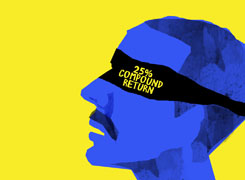Ramalingam Kalirajan |10894 Answers |Ask -Follow
Mutual Funds, Financial Planning Expert - Answered on May 23, 2024
He has an MBA in finance from the University of Madras and is a certified financial planner.
He is the director and chief financial planner at Holistic Investment, a Chennai-based firm that offers financial planning and wealth management advice.... more

Sir my SIP - SBI contra fund-2000, SBI small cap-1000, SBI small 250 index -1000, Aditya Birla sun Light PSU -2000, Parag Parikh flexi cap-2000, Motilal Oswal mid cap-2000, quant active fund-2000, total SIPs is to Rs.12000 per month , How many returns to get after 10 years investment.
Current SIP Portfolio Overview
Allocation Breakdown
SBI Contra Fund: Rs. 2000
SBI Small Cap Fund: Rs. 1000
SBI Small Cap 250 Index Fund: Rs. 1000
Aditya Birla Sun Life PSU Equity Fund: Rs. 2000
Parag Parikh Flexi Cap Fund: Rs. 2000
Motilal Oswal Mid Cap Fund: Rs. 2000
Quant Active Fund: Rs. 2000
Total Monthly SIP: Rs. 12000
Factors Affecting Returns
Fund Selection
Actively Managed Funds: Offer potential for higher returns but involve higher risk and management fees.
Index Funds: Lower fees but may have limitations in beating market benchmarks.
Market Performance
Equity Market Trends: Historical performance and future market conditions impact investment returns.
Economic Factors: Macroeconomic indicators influence market movements and fund performance.
Projected Returns Analysis
Historical Performance
Review historical performance of selected funds to gauge potential returns.
Consider past performance trends, fund manager expertise, and investment strategy.
Market Outlook
Analyze current market trends, economic indicators, and sectoral performance.
Evaluate growth prospects of sectors represented in your SIP portfolio.
Risk Assessment and Diversification
Risk Management
Diversification: Spread investments across different asset classes and sectors to manage risk.
Risk Appetite: Assess your risk tolerance to ensure investment choices align with your financial goals.
Regular Monitoring
Review SIP performance periodically to track progress and make informed adjustments.
Stay updated with market developments and fund performance reports.
Conclusion and Future Outlook
Based on the current investment allocation and market conditions, projecting precise returns over a 10-year period can be challenging. However, a diversified SIP portfolio across various asset classes and fund types is a prudent approach to long-term wealth creation.
Best Regards,
K. Ramalingam, MBA, CFP,
Chief Financial Planner,
www.holisticinvestment.in
You may like to see similar questions and answers below
Ramalingam Kalirajan |10894 Answers |Ask -Follow
Mutual Funds, Financial Planning Expert - Answered on Apr 30, 2024
Ramalingam Kalirajan |10894 Answers |Ask -Follow
Mutual Funds, Financial Planning Expert - Answered on Apr 12, 2024
Ramalingam Kalirajan |10894 Answers |Ask -Follow
Mutual Funds, Financial Planning Expert - Answered on May 10, 2024
Ramalingam Kalirajan |10894 Answers |Ask -Follow
Mutual Funds, Financial Planning Expert - Answered on May 25, 2024
Ramalingam Kalirajan |10894 Answers |Ask -Follow
Mutual Funds, Financial Planning Expert - Answered on Oct 24, 2024
Mayank Chandel |2576 Answers |Ask -Follow
IIT-JEE, NEET-UG, SAT, CLAT, CA, CS Exam Expert - Answered on Dec 17, 2025
Radheshyam Zanwar |6747 Answers |Ask -Follow
MHT-CET, IIT-JEE, NEET-UG Expert - Answered on Dec 16, 2025
Shalini Singh |181 Answers |Ask -Follow
Dating Coach - Answered on Dec 16, 2025
Patrick Dsouza |1429 Answers |Ask -Follow
CAT, XAT, CMAT, CET Expert - Answered on Dec 16, 2025
Nayagam P P |10858 Answers |Ask -Follow
Career Counsellor - Answered on Dec 16, 2025
Nayagam P P |10858 Answers |Ask -Follow
Career Counsellor - Answered on Dec 16, 2025
Samraat Jadhav |2510 Answers |Ask -Follow
Stock Market Expert - Answered on Dec 16, 2025
Samraat Jadhav |2510 Answers |Ask -Follow
Stock Market Expert - Answered on Dec 16, 2025
Nayagam P P |10858 Answers |Ask -Follow
Career Counsellor - Answered on Dec 16, 2025
Nayagam P P |10858 Answers |Ask -Follow
Career Counsellor - Answered on Dec 16, 2025

























